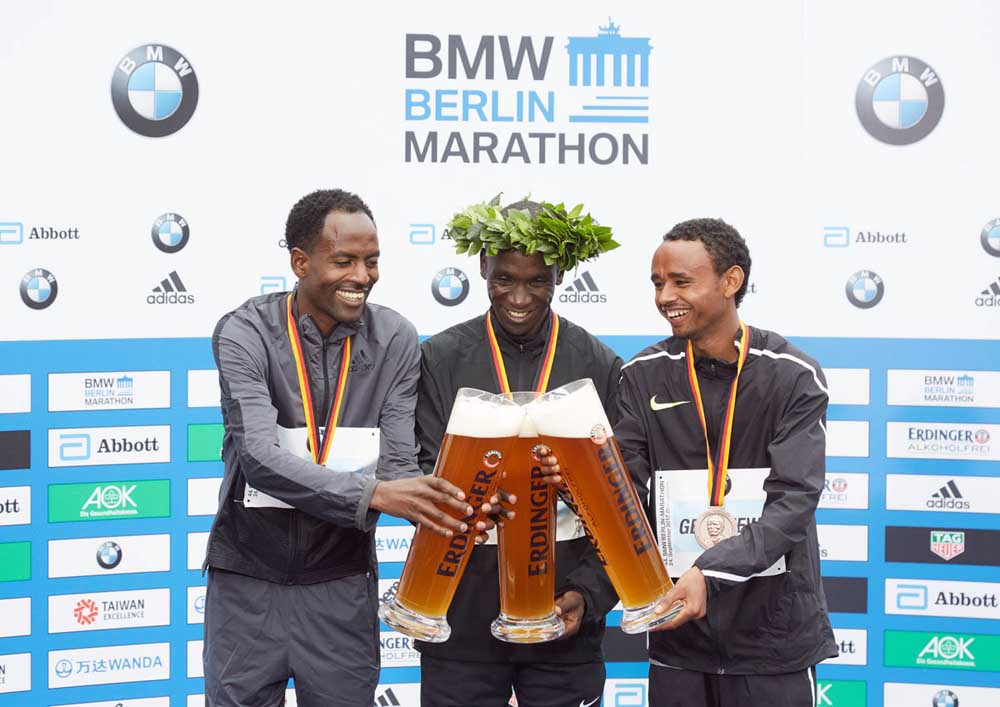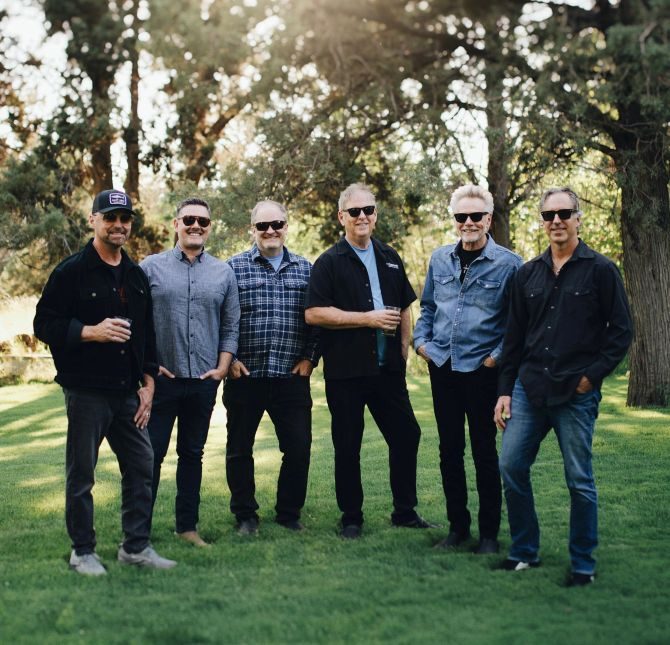Germany’s gold medal recipe includes lots of (nonalcoholic) beer
Published 12:00 am Tuesday, February 20, 2018

- The top three finishers at the 2017 Berlin Marathon were given medals and big nonalcoholic beers. Germans often drink it in place of sports drinks after exercise. (Christian Behnke/Erdinger Weissbrau via The New York Times)
When Simon Schempp, a biathlete on the German Olympic team, was training for the Pyeongchang Games, he often capped a hard day on the trail with a bottle of nonalcoholic beer. He enjoys the taste of beer like most Germans, who drink more of it per capita than the people of almost any other nation. But he drank the nonalcoholic variety for more than just the flavor.
“It’s a really good drink directly after training or after competition,” said Schempp, who won a silver medal in the 15-kilometer mass start event Sunday.
Schempp’s sober assessment is popular in Germany. While most people see nonalcoholic beer as a responsible replacement for regular beer, Germans often drink it in place of sports drinks after exercise. Beer or Gatorade? No contest.
Johannes Scherr, doctor for the German Olympic ski team, said nearly all of his athletes drink nonalcoholic beer during training. And the brewery Krombacher has supplied 3,500 liters (about 1,000 gallons) of nonalcoholic beer to the athletes’ village so German athletes can enjoy it during competitions at the Pyeongchang Games, where through Sunday’s events Germany was tied with Norway for the most gold medals.
German beer companies originally marketed nonalcoholic beer as the “car driver’s beer” after it was invented in East Germany in 1973. A decade ago, Scherr, who also teaches sports medicine at the Technical University of Munich, noticed that beer companies were beginning to pitch their nonalcoholic products to health-conscious consumers.
“A lot of companies tried to associate beer, especially nonalcoholic beer, and sports,” he said. “But there wasn’t any scientific background behind it.”
Scherr conducted a double-blind study in which he gave runners in the 2009 Munich Marathon nonalcoholic beer every day for three weeks before and two weeks after the race. These runners suffered significantly less inflammation and fewer upper respiratory infections after the race than runners who had been given a placebo.
“This was pretty surprising to us,” said Scherr, who published the results in the peer-reviewed journal Medicine & Science in Sports & Exercise.
If nonalcoholic beer helped athletes recover more quickly from grueling workouts, then it could allow them to train harder. Scherr credits the nonalcoholic beer’s salubrious effects to its high concentration of polyphenols, immune-boosting chemicals from the plants with which its brewed.
“After that, we really had the proof: It’s really healthy and not only a marketing gag,” said Holger Eichele, chief executive of the German Brewers Association. From 2011 to 2016, German consumption of nonalcoholic beer grew 43 percent even as overall beer consumption declined, according to Euromonitor International. New brewing techniques helped to diversify and improve the flavor, and now there are more than 400 nonalcoholic beers on the market in Germany. Germans drink more nonalcoholic beer than any nation, except Iran.
“It tastes good, and it’s good for the body,” Linus Strasser, an alpine skier from Munich, said Sunday after finishing his second run in the men’s giant slalom. “Alcohol-free wheat beer, for example, is extremely healthy. It’s isotonic. That’s why it’s good for us sports guys.”
Many breweries market their nonalcoholic beers explicitly as sports drinks. The Bavarian brewery Erdinger, for instance, calls its nonalcoholic wheat beer “the isotonic thirst quencher for athletes” and advertises it with the motto, “100% Performance. 100% Regeneration.” Heineken promotes its nonalcoholic beer Heineken 0.0 with lines like, “There is no limit to what the human body can achieve,” and recently struck a deal to sell Heineken 0.0 in the vending machines at McFit Fitness, Germany’s largest chain of gyms. At most big German marathons, nonalcoholic beer is available to runners at the finish line. Erdinger handed out 30,000 bottles at the Berlin Marathon last year.
Sales have been helped by the fact that traditional sports beverages, like Gatorade, are not particularly popular in Germany. Nonalcoholic beer has a lower sugar content compared with many sports drinks, and Germans drank three times as much nonalcoholic beer as they did sports drinks in 2016.
Moritz Geisreiter, a German speedskater, said he drank nonalcoholic beer from the grocery store before switching to a specialized sports beverage designed by a nutritionist. “It’s a nice solution for someone who doesn’t want to pay dozens of euros a week for a nutrition drink,” he said last week at the Olympic skating oval in Gangneung, South Korea.
Scherr does not prescribe nonalcoholic beer to the German Olympic skiers. Most of them are Bavarian and drink it on their own. He usually recommends that athletes drink a nonalcoholic beer after exercise, but a 2016 study by Chilean researchers in the peer-reviewed journal Nutrients also found that nonalcoholic beer before a workout helped soccer players stay hydrated compared with regular beer and water. Scherr also believes it benefits most endurance athletes and may be less helpful in sprint or strength-based competitions, in which inflammation is less of a problem.








